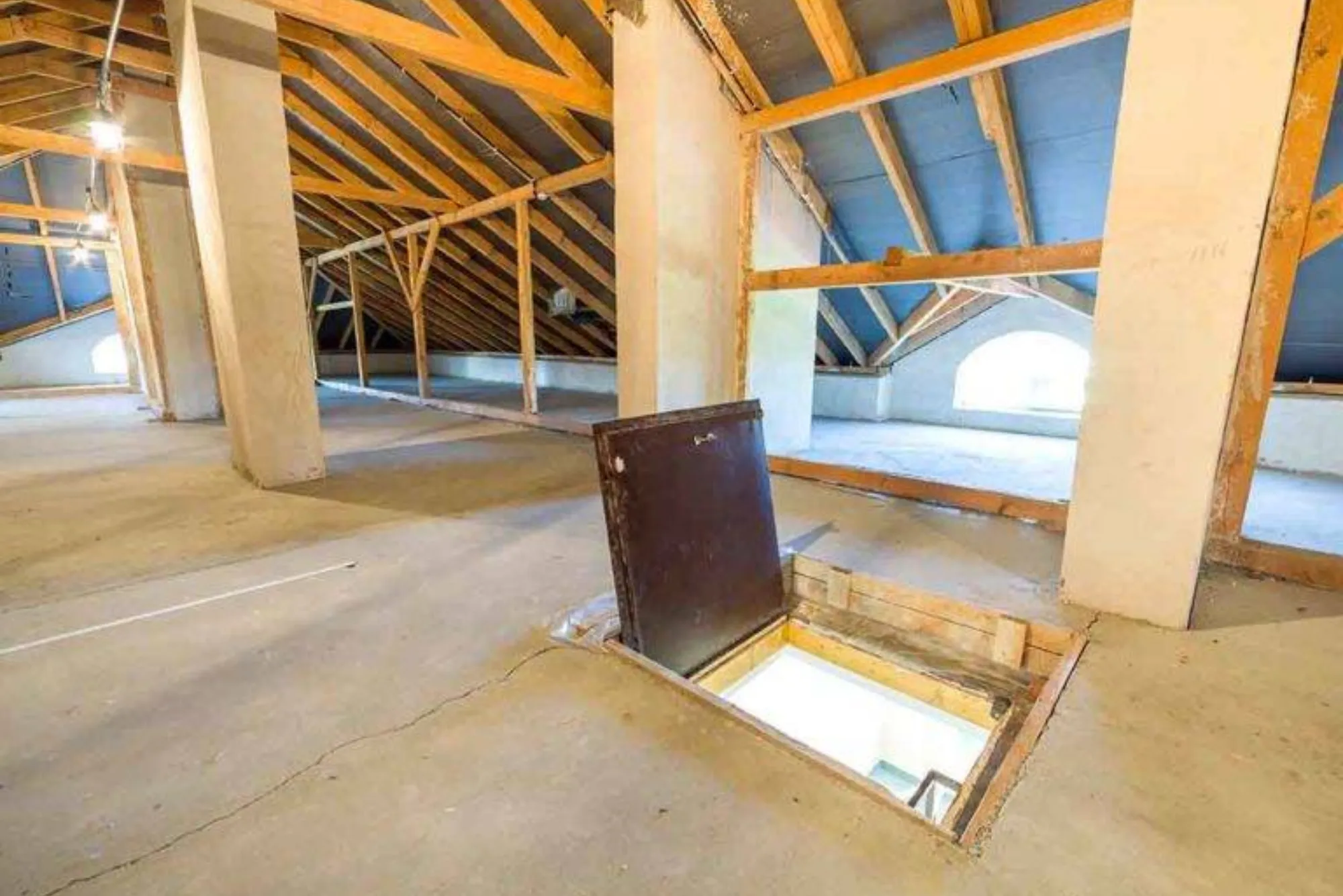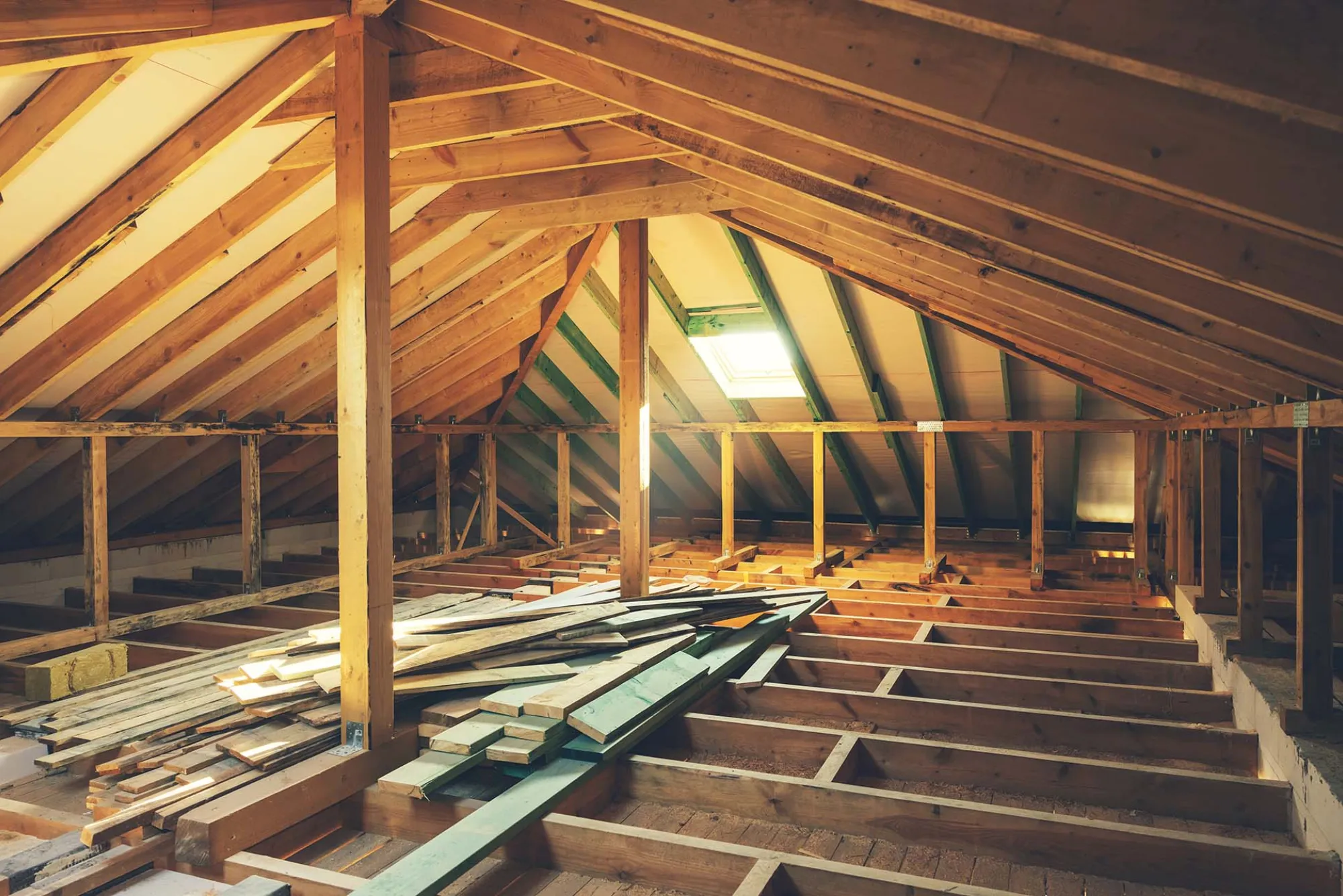Maximizing usable space in a home is a common challenge, especially in smaller or multi-story properties. Loft spaces, often overlooked or underutilized, offer an excellent opportunity to enhance the living area.
However, many homeowners wonder if installing loft flooring truly adds usable space or if it’s merely an aesthetic upgrade.
This article will explore how loft flooring impacts the functionality of a space, its benefits and limitations, and whether it’s a worthwhile investment for homeowners looking to increase usable space.
Understanding Loft Spaces
Lofts are typically open, high-ceilinged areas located just below the roof of a house or apartment. These spaces often feature exposed beams, limited natural light, and steep or angled ceilings, making them difficult to use efficiently.
Commonly found in attics or upper floors, lofts are usually seen as storage areas or auxiliary rooms that are not fully integrated into the main living space.
While some homeowners transform these spaces into functional rooms like offices, bedrooms, or playrooms, the usability of a loft depends heavily on its layout and accessibility.
The lack of a proper floor and uneven surfaces in many lofts often limit how much of the space can be practically used for storage or everyday activities.
The Role of Loft Flooring
Loft flooring is the installation of a solid surface over the beams of a loft space, typically using materials like plywood, chipboard, or OSB (oriented strand board).
The purpose of adding loft flooring is to create a stable, level surface that allows for safer and more practical use of the space.
Without flooring, a loft space may be difficult to access and navigate, and the beams or insulation could pose hazards or inefficiencies.
Installing flooring also improves the aesthetics of the space by concealing structural elements and providing a cleaner, more organized look.
Depending on the material used, loft flooring can also provide insulation benefits, reducing drafts and increasing the comfort of the space.
Does Loft Flooring Add Usable Space?
The installation of loft flooring can add usable space, but its true impact depends on several factors. Firstly, having a solid floor creates a more functional surface, turning an otherwise inaccessible area into a viable space for storage or other uses.
Without flooring, items stored in the loft might easily fall between the beams, or the uneven surfaces may make it difficult to place furniture or organize belongings.
By adding a floor, you make it easier to move around, store things, and even use the loft as an additional room for activities.
However, the term “usable space” doesn’t solely refer to the amount of floor area available but also how effectively the space can be integrated into your home’s overall layout.
Loft boarding is a home improvement technique that involves the installation of flooring in a loft or attic space, creating a stable, accessible surface that can be used for storage or even as a living area.
This process typically includes laying down sheets of plywood, chipboard, or other suitable materials over the beams, making it safer and easier to move around in the loft.
By adding loft boarding, homeowners can effectively maximize the unused vertical space in their homes, turning what is often an awkward, difficult-to-navigate area into a highly functional storage solution.
Not only does loft boarding provide more organized storage space, reducing clutter in other areas of the home, but it can also help improve the overall structure of the loft by supporting heavier items and ensuring that objects do not fall between beams.
Moreover, loft boarding can enhance the insulation of the space, reducing heat loss and improving the energy efficiency of the home.
While loft boarding can be a cost-effective way to increase usable space, it’s important to assess the structural integrity of the building before installation to ensure that the loft can support the additional weight.
Whether used for seasonal storage, stashing away boxes, or even creating a functional workspace, loft boarding is an effective solution to transform an underused attic or loft into a valuable part of the home.
Flooring allows for better organization and access, but it does not necessarily mean that the loft will be transformed into a fully functional living area unless other modifications, such as insulation and lighting, are also addressed.

Loft flooring is a popular home improvement solution that enhances the functionality and usability of an otherwise underutilized loft space.
By installing a solid surface, such as plywood or chipboard, over the beams of a loft, homeowners can create a stable and accessible area that can be used for storage, living, or working.
Without flooring, lofts can be difficult to navigate and prone to clutter, as items may easily fall between the beams or become disorganized.
Loft flooring not only provides a safer and more reliable surface but also makes it possible to store heavier items and organize belongings more efficiently.
Additionally, the addition of a floor can make a loft space feel more cohesive and polished, transforming it from an awkward, unused area into a versatile room.
Whether it’s being converted into a home office, extra bedroom, or simply a well-organized storage zone, loft flooring significantly increases the practical square footage of a home.
However, it’s important to consider the structural integrity of the space before installing flooring, as the weight load of the materials may require reinforcement.
Overall, loft flooring is an investment that can improve the overall utility of a home, adding both space and value when done correctly.
Benefits of Installing Loft Flooring
One of the most significant advantages of installing loft flooring is the added safety and accessibility it provides. A flat, solid surface reduces the risk of accidents and makes it easier to navigate the space, whether for storage or other purposes.
With a proper floor, the loft becomes a much more organized area, as you can store items without worrying about them falling or being damaged.
This makes the loft a more efficient storage solution, freeing up other areas of the home. Additionally, installing flooring can enable the transformation of the loft into a functional room, such as a home office, gym, or extra bedroom, depending on the size and height of the space.
Not only does this increase your home’s usable square footage, but it may also add value to your property.
A well-finished loft with a proper floor can be a strong selling point for prospective buyers, offering them a versatile living area that can serve a variety of needs.
Limitations to Consider
While loft flooring can certainly enhance a space, there are limitations and considerations to keep in mind before moving forward with this project.
First, the structural integrity of the building should be considered. Adding flooring to a loft space can increase the weight load on the structure, and if the beams or roof are not designed to support this extra weight, it could lead to potential damage or safety concerns.
It’s important to consult with a structural engineer or contractor to determine if your loft can safely support the flooring and any additional items or furniture you plan to store or place there.
Additionally, the cost of installing loft flooring can be significant, especially if structural adjustments or additional materials are needed.
The time and effort required for installation should also be considered, as it can be a lengthy process depending on the complexity of the space.
Furthermore, building codes or local regulations may impose restrictions on loft modifications, particularly in older homes or buildings.
Homeowners should check with local authorities to ensure compliance with safety standards and legal requirements before proceeding with the installation.
Alternative Ways to Maximize Loft Space Without Flooring
If installing flooring in a loft is not an option or does not fit into your budget, there are other ways to maximize the space’s usability.
One option is to utilize hanging storage solutions, such as hooks, racks, or overhead shelves, which take advantage of vertical space without the need for additional flooring.
Another alternative is to incorporate modular or flexible storage systems that can be moved or adjusted as needed, helping to optimize the loft’s organization and efficiency.
Creating defined zones within the loft using partitions, curtains, or shelving can also make the space feel more functional without a full flooring installation.
In some cases, simply organizing the space more effectively with bins or boxes can make the loft feel more usable and less cluttered.
Loft flooring can certainly add usable space by creating a safer, more organized, and accessible area. It transforms a previously underutilized space into a practical storage area or additional room.
However, the decision to install flooring should be weighed carefully against the costs, structural considerations, and potential limitations.
It’s essential to evaluate the long-term benefits of improved safety and organization versus the upfront investment required.
For homeowners looking to maximize their loft space, flooring can be an excellent solution, but it is also worth considering alternative storage solutions if budget or structural concerns are a factor.
Ultimately, the choice to install loft flooring will depend on the specific needs of the space and the homeowner’s vision for how they wish to utilize the loft.




